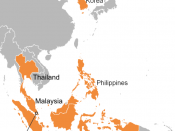Somebody says that the "American Dream" is built on the bases of Credit. It might be right, however, now a new problem has occurred. A credit crunch is flipping the whole U.S, and has become a credit crisis.
Credit crisis has happened many times during human history. Credit crisis usually comes with cyclical purging of excesses. When the whole industry is booming, prices are growing fast and profits are huge. Thus the investments are growing faster than the market itself. When the crisis comes, many products cannot be sold out, and prices fall sharply, the whole market is tighten, the relationship between borrower and lender is broken. There are also some special kinds of credit crisis like the one happened in Britain in 1839 is caused by poor harvest. However, after World War II, since the government strengthen the intervention in market by monetary and fiscal policies, such as increasing money supply, lowering interest, and so on, the reason why credit crisis happen becomes more complex.
(Anonymous, 2008)The global financial crisis of September-October 2008 is a major ongoing financial crisis, the worst of its kind since the Great Depression. It became prominently visible in September, 2008 with the failure, merger or conservatorship of several large United States-based financial firms. (Akbar, 2008.) Many economists argued that this crisis starts with the money supply. After Sept. 11, 2001, the Federal Reserve pumped so much money into the financial system that it distorted the incentives and the decision making of everyone in finance. (Brian, 2008) The American governments continuously starts war and expend money supply, but these methods only postponed the financial crisis and accumulated bad effects. Since 2007, economic growth in major developed countries began to "slow down" the global rise in the level of inflation in most countries of the world...


